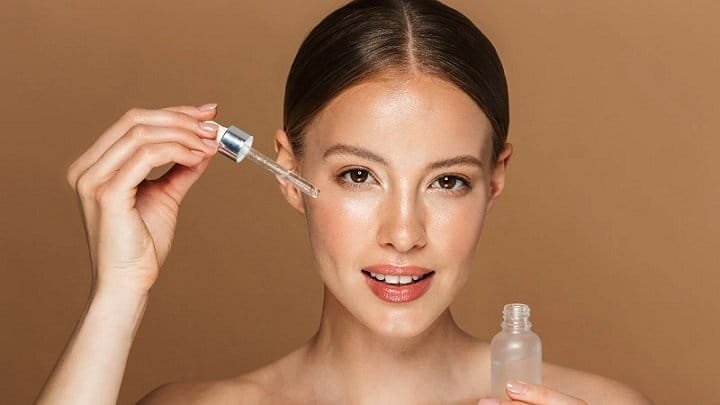Eliminates pimples and increases luminosity. It is more than likely that you have heard many experts preach the importance of niacinamide
Eliminates pimples and increases luminosity.
It is more than likely that you have heard many experts preach the importance of niacinamide, an ingredient known for its ability to eliminate stains, reinforce the skin barrier and provide luminosity to the skin . So no, we are not surprised that it has been one of the most sought after ingredients in 2022.
If you’re still not sure if it deserves a place in your arsenal of skin care products, don’t worry because today we bring you everything you need to know about vital vitamins for the skin and everything the experts have to say about it. In addition, we explain how to incorporate it into your skin care routine.

What is niacinamide?
Niacinamide is a super effective vitamin where it exists. Belonging to the vitamin B3 family, this ingredient is found naturally in foods such as cereals, fish, meat, and legumes. Taking this ingredient orally has many health benefits, but for the skin, topical niacinamide can also do wonders to help you achieve a clear and glowing complexion.
The chemical is used in skin care as a ‘cellular communicator.’ This means it can tell skin cells to make more new, healthy cells,” explains Dr. Janet Mason, Q+A’s in-house skin expert.
She adds: “Niacinamide has a unique ability to interrupt the transfer of melanosomes that cause hyperpigmentation , but it’s also a fantastic anti-inflammatory ingredient , helping to reduce acne, redness and discomfort .

What benefits does niacinamide have for our skin?
In short, it can help to achieve brighter, smoother and more revitalized skin , improve tone and minimize visible pores .
Niacinamide is famous for its skin benefits,” explains Dr. Mason. Niacinamide works by increasing the production of ceramides, a type of lipid (a fat) found in the upper layers of the skin that helps form the natural barrier that locks in moisture and repels irritants and pollution.
Plus, niacinamide acts like a magnet to draw out dirt and oil , so it’s great for all skin types, but especially oily or blemish-prone skin . It’s a great ingredient to include in toners, as it can boost the performance of moisturizers and serums by improving the absorption process by balancing the skin,” adds Dr. Mason.
What is niacinamide used for?
Below, Dr. Anjali Mahto explains what niacinamide is used for in skin care:
Improve the skin barrier – “reduces water loss from the epidermis and increases the lipids (ceramides) and proteins found in the skin barrier layer.”
Dark Spots/Pigmentation/Age Spots: “Studies show that niacinamide reduces the appearance of hyperpigmented spots in both Asian and Caucasian skin by targeting the steps that lead to melanin or pigment production.
Improve skin texture and sebum: “Niacinamide reduces the production of sebum or oil in the skin, which may indirectly help improve visible pore size. It may also be helpful in cases of mild acne.”
Protection against environmental agents: “Topical niacinamide has been shown to reduce redness caused by sunlight, as it is believed to act as an anti-inflammatory agent.”
Fight Wrinkles – “Studies show it may play a small role in reducing fine wrinkles.”
Can all skin types use niacinamide?
Niacinamide can be found in various concentrations in skin care products and is generally well-tolerated, causing minimal irritation. Ideally, look for products that contain at least 5% niacinamide for best results, and ensure that it occupies prominently (in the top three to five) on a product’s ingredient list,” advises Dr. Mahto.
So should we run to buy skin care products that contain niacinamide? “Not necessarily,” explains Dr. Mahto. It’s worth a try if you’re worried about dark spots, but it’s probably not the best option for fighting wrinkles, and it’s certainly not a substitute for daily sun protection,” he adds.
If you’re not sure if you should incorporate it into your routine, Dr. Mahto advises that you “talk to your dermatologist, who will be able to guide you based on your skin.”

Can niacinamide be used every day?
Dr. Paris Acharya , a leading aesthetic physician on Harley Street , explains that niacinamide can be incorporated into a daily regimen tailored specifically to the needs of the skin. Pair it with a gentle cleanser and broad spectrum SPF in the morning to ensure your skin has comprehensive protection against extrinsic aging caused by pollution and the sun.
How long does it take to see results from niacinamide?
“If you use niacinamide on the skin, you may notice some effects immediately, although most people experience results within eight to twelve weeks,” reveals Dr. Acharya.
What ingredients can you use with niacinamide?
Niacinamide is a great ingredient to add to a retinol formula as it provides additional antioxidant benefits to the skin. Niacinamide is calming, increases skin tolerance and reduces sensitivity, making it the perfect partner for retinol, which can often be too irritating for some people,” continues Dr. Acharya.
The only interaction to be aware of is that niacinamide inactivates L-ascorbic acid (vitamin C) , but only if it is a water-based combination product. Therefore, niacinamide and vitamin C can still be used, but in different products and preferably not one after the other,” he adds.
Is niacinamide safe?
Niacinamide is suitable for most skin types. Used topically, niacinamide is extremely safe. The only side effects of topical niacinamide are mild itching, redness, and burning. However, they are rare and usually go away over time, as the skin gets used to the substance,” adds Dr. Acharya.
